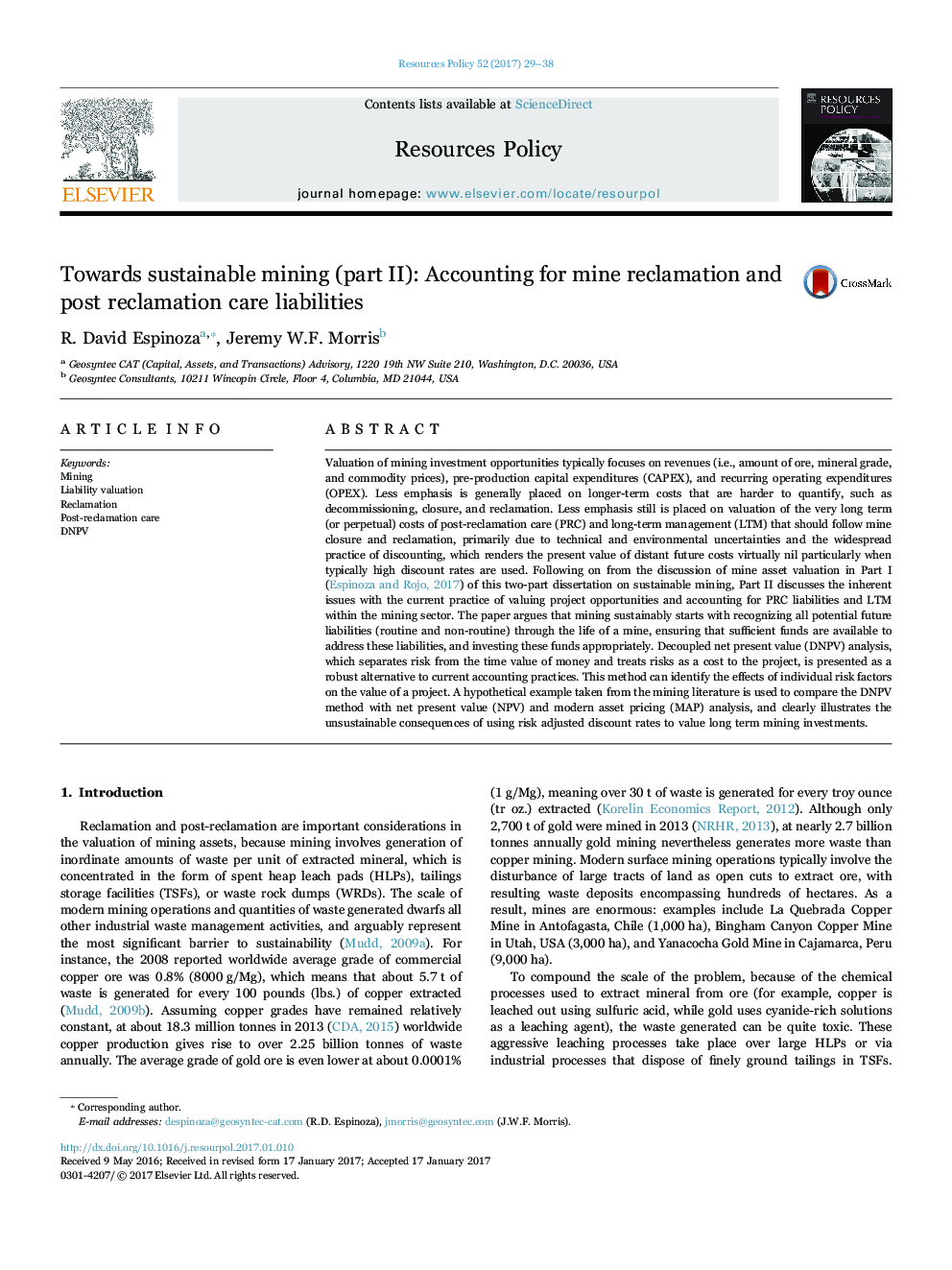| کد مقاله | کد نشریه | سال انتشار | مقاله انگلیسی | نسخه تمام متن |
|---|---|---|---|---|
| 5104188 | 1480751 | 2017 | 10 صفحه PDF | دانلود رایگان |
عنوان انگلیسی مقاله ISI
Towards sustainable mining (part II): Accounting for mine reclamation and post reclamation care liabilities
ترجمه فارسی عنوان
به سمت معدنکاری پایدار (قسمت دوم): حسابداری برای احیای معادن و تعهدات مراقبت پس از احیای
دانلود مقاله + سفارش ترجمه
دانلود مقاله ISI انگلیسی
رایگان برای ایرانیان
موضوعات مرتبط
مهندسی و علوم پایه
علوم زمین و سیارات
زمین شناسی اقتصادی
چکیده انگلیسی
Valuation of mining investment opportunities typically focuses on revenues (i.e., amount of ore, mineral grade, and commodity prices), pre-production capital expenditures (CAPEX), and recurring operating expenditures (OPEX). Less emphasis is generally placed on longer-term costs that are harder to quantify, such as decommissioning, closure, and reclamation. Less emphasis still is placed on valuation of the very long term (or perpetual) costs of post-reclamation care (PRC) and long-term management (LTM) that should follow mine closure and reclamation, primarily due to technical and environmental uncertainties and the widespread practice of discounting, which renders the present value of distant future costs virtually nil particularly when typically high discount rates are used. Following on from the discussion of mine asset valuation in Part I (Espinoza and Rojo, 2017) of this two-part dissertation on sustainable mining, Part II discusses the inherent issues with the current practice of valuing project opportunities and accounting for PRC liabilities and LTM within the mining sector. The paper argues that mining sustainably starts with recognizing all potential future liabilities (routine and non-routine) through the life of a mine, ensuring that sufficient funds are available to address these liabilities, and investing these funds appropriately. Decoupled net present value (DNPV) analysis, which separates risk from the time value of money and treats risks as a cost to the project, is presented as a robust alternative to current accounting practices. This method can identify the effects of individual risk factors on the value of a project. A hypothetical example taken from the mining literature is used to compare the DNPV method with net present value (NPV) and modern asset pricing (MAP) analysis, and clearly illustrates the unsustainable consequences of using risk adjusted discount rates to value long term mining investments.
ناشر
Database: Elsevier - ScienceDirect (ساینس دایرکت)
Journal: Resources Policy - Volume 52, June 2017, Pages 29-38
Journal: Resources Policy - Volume 52, June 2017, Pages 29-38
نویسندگان
R. David Espinoza, Jeremy W.F. Morris,
